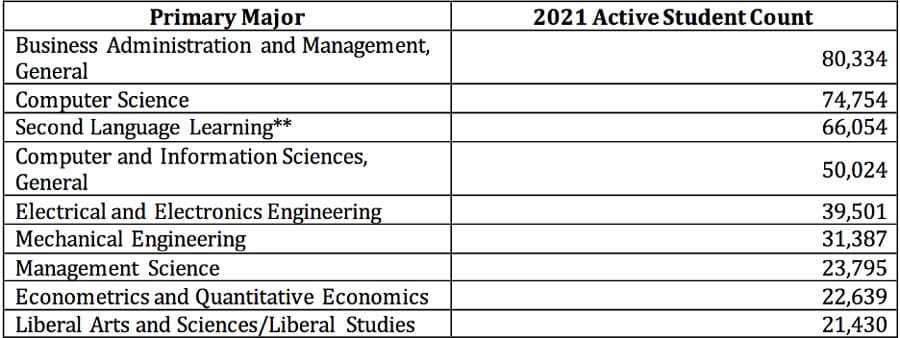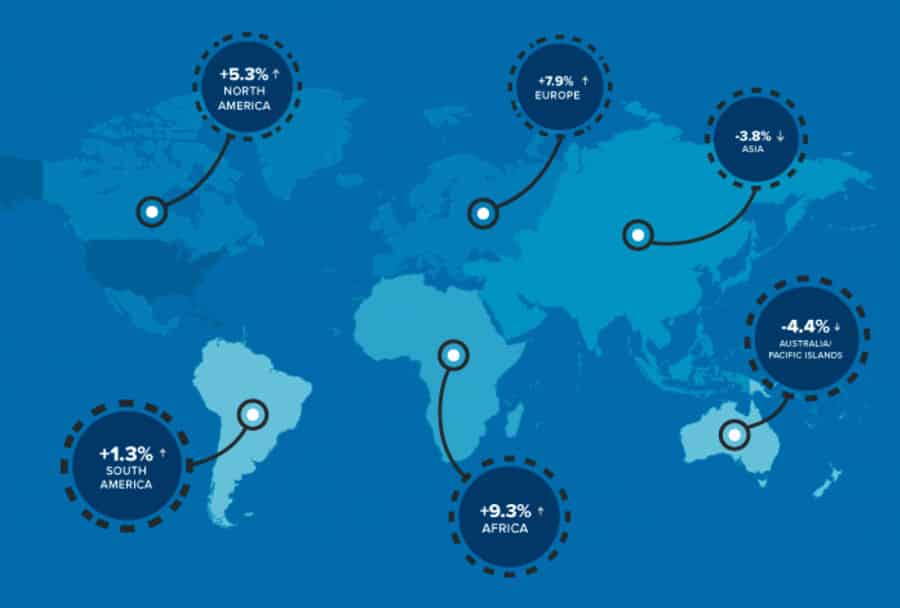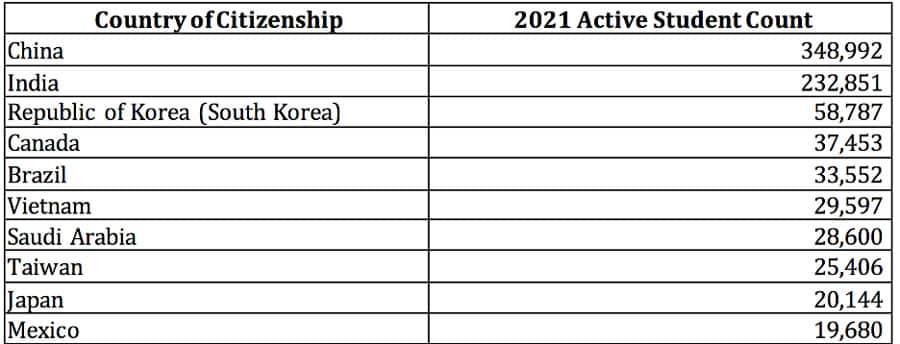US visa data indicates international enrolments down marginally in 2021
- While international enrolments in the US declined again in 2021, the extent of the decline is much less severe than in 2020
- The picture is mixed across sectors and study levels, however
- The Chinese market continues to cool off, while India, Europe, and Africa are notable sources of growth
After enduring a nearly 18% drop in foreign enrolments in 2020, US educators – at least in higher education – began to see room for optimism in 2021 as the sharp decline trend began to tip the other way. The latest data release from the US Customs and Immigration Student and Exchange Visitor Program indicates that the number of SEVIS records for active F-1 and M-1 students in the US fell by -1.2% compared with 2020, for a total of 1,236,748 students holding those visas. The overall decline is obviously much more modest than in 2020, but K-12 programmes and associate degree programmes suffered more significant enrolment losses.
SEVIS-registered students are enrolled in primary and secondary schools, language training centres, higher education, and practical training programmes related to their degrees. For 2021, the vast majority (92%) were enrolled in higher education programmes at the associate, bachelor’s, master’s, or doctoral levels. Higher education programmes hosted slightly more international students (1,142,352) in 2021, a +1.8% increase from the year before.
K-12 sector hosting fewer Chinese students
The K-12 sector was affected more negatively than others; 9,489 fewer K-12 students came to the US in 2021, representing a -16% decline. That drop follows a decrease of -24.6% in 2020, so the cumulative effects of two years of the pandemic have been particularly challenging for this sector.
Especially noteworthy here is a general trend of declining Chinese enrolments in the US (and in several other destinations). Whereas in 2020, Chinese K-12 students composed nearly 44% (25,941) of the total number of international K-12 students in the country, in 2021 this proportion fell to 37% (17,375). This means that of the 9,489 fewer international enrolments in US K-12 in 2021, the vast majority were lost from the Chinese market. The top five markets for US K-12 educators in 2021 were:
- China 37% (17,375) – down from 44%
- South Korea 8.7% (4,288) – down from 9.2%
- Mexico 7% (3,462) – up from 4.8%
- Vietnam 6.7% (3,323) – down from 7.5%
- Canada 4.3% (2,129) – up from 3.4%
OPT numbers fall for third consecutive year
The number of students participating in Optional Practical Training (OPT) also fell by -13.6%, a more significant decrease than in 2020 when numbers fell by -12%. A total of 105,970 international students were working in the US under the OPT programme in 2021, compared with 122,699 in 2020.
Graduate programmes see solid uptick
In terms of study level, US master’s programmes are becoming more popular. There was a +6.6% increase in active F-1 visas for master’s programmes (for a total of 438,390 students), a nice contrast from a -16% decrease in 2020. One step higher, US doctoral programmes enrolled +6.7% more international students; 191,027 international students studied at the doctoral level in 2021 compared with 179,073 in 2020. International master’s students now make up 38% of the total international student population in higher education in the US (up from 36% in 2020), and doctoral students compose 17% of the total (up from 16% in 2020).
Bachelor’s programmes were fairly stable (-0.5% decrease in F-1 visas for a total of 881,830 students), following a -13% decline in 2020. International bachelor’s students make up 38% of the total number of international students in US higher education, down from 40% in 2020.
But the number of international students seeking associate degrees decreased by -19.1% in 2021 (after falling by -19.9% in 2020) for a total of 69,495 students on F-1 visas for this level of study. The proportion of international students pursuing associate degrees fell from 8% (2020) to 6% in (2021) of the total in US higher education.
Business studies still the most popular
US business studies programmes enrolled 80,334 international students in 2021, compared with 90,099 in 2020 – a -10.8% drop. In contrast, computer science programmes increased their international enrolments by +10.5% and computer and information sciences programmes grew by +14.8%. Electrical and electronics engineering was down by -8.9% and mechanical engineering by -4.3%.

Emerging markets contributing more growth
Asia continues to be the most important region for international student recruiters in the US, but there are contrasting trends in the two largest markets of China and India. China sent 33,569 fewer students, while India sent 25,391 more students in 2021 compared with 2020.

The table below shows the top ten student markets for US educators. For perspective, here is what happened in 2021 versus 2020: China fell by -8.7%, India grew by +12.2%, South Korea fell by -13.8%, Canada grew by +5.8%, Brazil fell by -3.8%, Vietnam fell by -8.9%, Saudi Arabia fell by -24.8%, Taiwan fell by -3.7%, Japan fell by -23.4%, and Mexico grew by +13.1%. The declines from Asia are offset by moderate growth from Latin America (+1.3%), Europe (+7.9) and especially Africa (+9.3).
In Africa, Nigeria sent +12% more students (for a total of 19,338 Nigerian students in the US), while Kenya sent 13% more students (for a total of 5,462 Kenyan students). In Europe, the main growth stories are summarised in the chart following the top ten markets.


For additional background, please see:
















